Back in August 1994, the first online retail transaction took place, marking the birth of a new era of shopping.
Fast forward to 2021, and there are more than 2 billion digital shoppers worldwide. This ecommerce revolution is underway, even as we speak. It’s predicted that by 2040, as much as 95% of all purchases will be made online.
This is great news for your online store, as this kind of business clearly holds tremendous potential to be successful.
But, one detail can disrupt all your plans – a poor conversion rate.
Let’s discuss some of the most common conversion obstacles that are easy to solve and CRO strategies you can implement.
1. Difficulty Visualizing the Product
Online shopping is very convenient, but the fact that customers have a hard time visualizing the product can impact your conversion rates.
Don’t forget that sensory experiences play an important role when it comes to making a purchasing decision. So, if your customers can’t feel, touch, or try on the product, they will be reluctant to buy.
This is the critical reason why 55% of consumers choose to purchase in-store instead of online.
There’s not much you can do about the touching and feeling part of the problem, but you can help your customers visualize how it is to use or interact with the item they’re interested in. The importance of allowing them to get a sense of how a particular product will look on them or in a room cannot be overstated.
It’s true that your product descriptions have to be detailed, clear, and very vivid, but words alone aren’t enough.
Solution #1: Showcase High-quality images and videos
Including multiple high-quality images and videos will make it possible for your customers to evaluate the product and inspect it. This is highly reassuring since they can’t tell what the texture, size, height, or length of a particular item is.
A comprehensive gallery will give your customers a feeling as if they were in a physical store since they will be able to see the product from every angle and in different contexts. All this will make them more confident about completing the transaction at checkout.
For a good example, check out how Fire Pit Surplus offers a detailed product gallery together with videos on their Elementi Granville product page. This way their customers can get an idea of how a specific firepit will fit into their space.
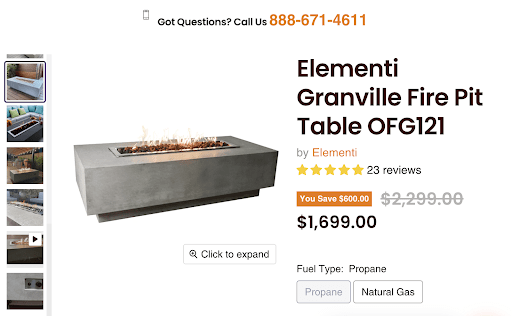
Solution #2: Try augmented reality solutions
AR technology can be a great addition to your store, as it allows people to virtually try on the apparel or superimpose a digital product image over a real-world environment.
So, instead of having to visualize what your product looks like on them or in their space, your customers can see it for themselves.
Maybelline provides one of the best examples on this topic. There is an easy-to-use AR tool on their website, allowing customers to find the right makeup shade and see how a bold lipstick color would look on them.
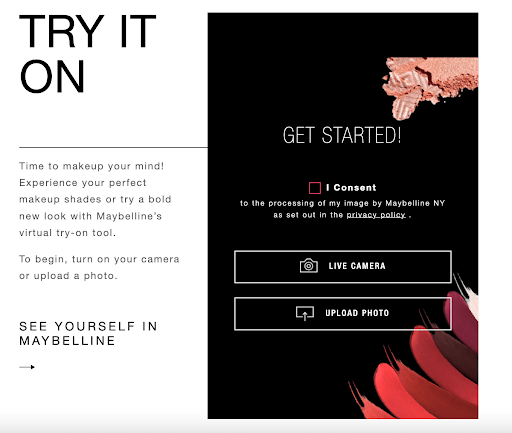
2. Security Concerns
Cybercrime is on the rise.
More than 40 million U.S. consumers experienced identity theft in 2021. Such a great number of cyber security incidents can make your customers reluctant to enter their sensitive information, such as credit card numbers and passwords, on your website. And this fact can dramatically increase your shopping cart abandonment rate – something that requires you to run time-consuming (but highly effective) cart abandonment email campaigns.
That’s why it’s essential to convince your store visitors that they have no reason to worry about the safety of the personal data they share with you.
Solution: Use SSL certificates and trust badges
One way to prove your ecommerce store is legitimate and secure is by installing an SSL certificate at checkout and across your entire website. The role of this certificate is to enable the secure exchange of client-server information and ensure that malicious agents can’t intercept it.
Another powerful tactic for enhancing on-site credibility and showing your customers that their data will be collected using industry-standard secure payment gateways is by displaying trust badges.
Trust badges can be in the form of accepted credit cards or payment methods, safe checkout badges, trust seals by antivirus providers, or money-back guarantee badges, to name just a few.
For example, Fjällräven uses a Trusted Shops badge to show that their store is secure and that buyers are protected. Plus, a 100-day return policy is another effective tactic for eliminating any traces of risk and fear over purchasing online.
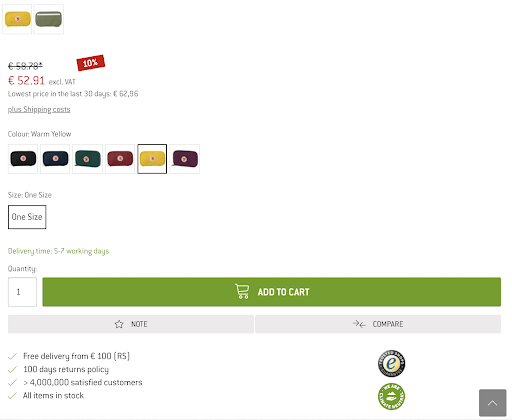
3. Lack of Trust
46% of consumers say they would be willing to pay more to purchase from the brands they trust.
When we’re talking about the concept of trust in sales and ecommerce, it’s important to distinguish between brand and product trust. These two are similar but not interchangeable, and if you want to boost your conversion rates, you’ll need to work on both aspects.
Solution #1: Build brand trust
Brand trust is a broad term, and it includes more than just offering exceptional products.
To build brand trust, it’s essential that the entire experience customers have with your brand is outstanding and memorable.
In addition to that, transparency is another essential factor that contributes to building brand credibility. To achieve this, make sure you provide your audience with all the relevant details about your brand. For example, explain what you do to improve corporate responsibility, what you do to make your brand environmentally friendly, or how you source your products.
Finally, present yourself as an authority in your industry, as consumers are more likely to purchase from reputable brands. This way, you’ll convince them your brand has the expertise to create a reliable, high-quality product.
Take a look at how Bay Alarm Medical leverages earned media on its medical alert systems page. A TV interview is a great tactic to present your brand as knowledgeable and worth trusting, especially when it’s not a paid ad.
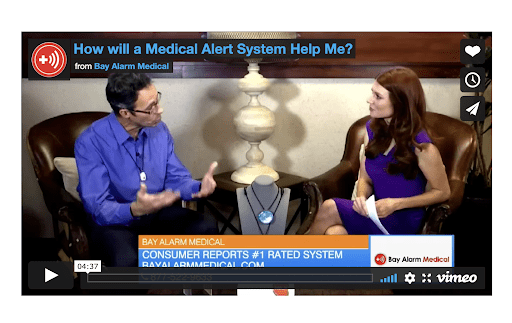
Solution #2: Build product trust
It’s also important for your customers to trust that your product will fit their needs.
It’s not enough to create a sales copy and list all product features and functionalities, especially when you’re selling it online.
Customers want to know whether someone else purchased that particular product and what they think about it. 84% of people trust online reviews as much as recommendations from their friends. This feedback, even though it comes from strangers, is more powerful than brand messaging, mainly because it’s authentic.
For example, customer reviews on the KURU Footwear plantar fasciitis page vouch for the quality of their shoes and talk about the benefits of wearing them.
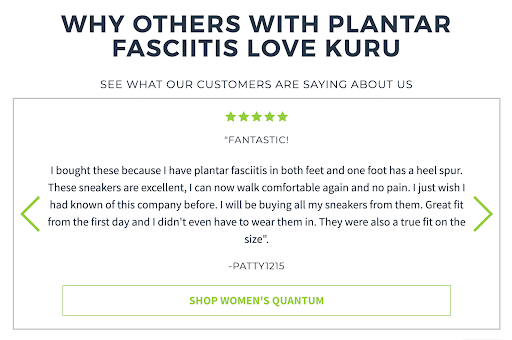
4. Slow Site Load Times
With each additional second your website takes to load, your conversion rate drops by 4.42% on average.
Visitors who land on your site expect pages to load in a snap, and if it turns out to be sluggish, they get frustrated and bounce off.
Poor website performance negatively impacts user experience, which in turn affects how potential customers perceive your company.
64% of customers who are dissatisfied with a website loading speed will opt for another store next time.
Moreover, unhappy customers will share their unpleasant user experience with their network and badmouth your store. So, basically, these couple of seconds of delay can snowball into a serious conversion issue.
According to Portent, a website that loads in 1 second boasts a conversion rate of almost 40%. On the other hand, in the case of a 6-second loading speed, this metric drops to 17%.
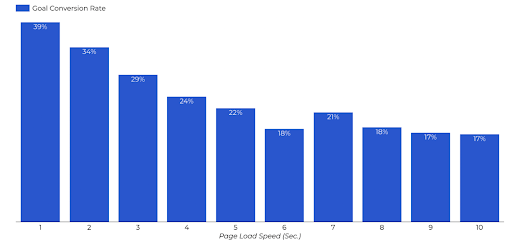
Solution: Implement proven tactics for minimizing load times
To avoid such a worst-case scenario and hurting your bottom line, try one of the following tactics for improving your site load times:
- Opt for a reliable hosting provider. This factor can significantly increase your website loading speed and handle traffic surges during holidays or Black Friday.
- Implement a content delivery network (CDN), that is, a system of interconnected servers spread across the globe. Instead of delivering content to all your visitors regardless of where they are from a single server, a CDN will use the one closest to every particular visitor’s location. Such a solution significantly reduces bandwidth usage and accelerates content delivery.
- Compress images. While it’s true that high-quality images play an important role in your conversion rates, you can reduce their size without sacrificing their quality with the help of lossless compression.
- Minify your code. This procedure consists of eliminating bad and bloated code that’s responsible for slowing down your site. Some ecommerce platforms like Shopify have an automatic minification feature.
5. Difficulty Finding a Suitable Product
Though a good thing, an abundance of products can backfire on you.
Sometimes customers have a hard time finding a suitable product, and this can lead to indecisiveness and lost dollars.
If you simply list all your products, their descriptions, and specifications, you’re not doing yourself a favor. Your customers won’t be able to tell the difference between similar products, and naturally, they’ll be confused, especially if they’re not experts.
Solution: Explain features and utilize product comparisons
Keep in mind that not all your customers have the same pain points. Helping them find a product that fits their needs is what will prompt them to make a purchasing decision.
For a great example of how to avoid this conversion obstacle, check out how Amerisleep covers their entire range of products and compares them in great detail on their memory foam mattress landing page. Customers can quickly identify and shortlist suitable mattresses based on their features and comparisons.
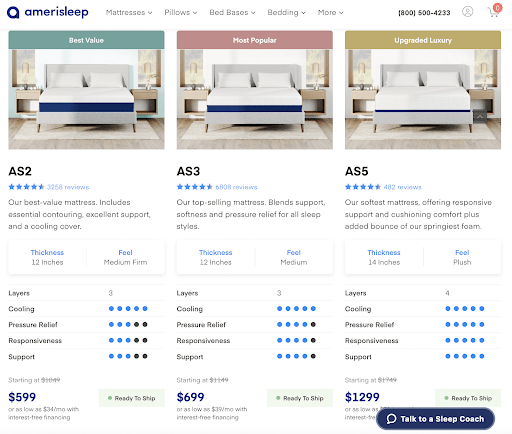
6. Lack of Incentive
Sometimes people need a little nudge to help them make a purchasing decision.
Incentives are among the most effective motivators as they can encourage customers to act immediately.
In an attempt to drive conversions, many ecommerce stores give away discounts frequently. However, when customers identify the pattern, they will start waiting for a discount and stop purchasing products at a regular price. Needless to say, this can eat into your profit margin and diminish your brand’s perceived value.
Luckily, more creative ways exist to incentivize your customers and boost conversions without reducing the price.
Solution #1: Implement gamification
Gamification uses a straightforward psychological mechanism to engage your customers and make their experience with your brand fun.
This tactic transforms customers from passive recipients of your marketing message into active participants, as their actions will result in rewards.
For example, Dress Forms USA has a gamified spin-to-win game that appears when a customer visits their product pages. Digital spinning wheels create a sense of excitement and anticipation, thus captivating your customers’ attention.
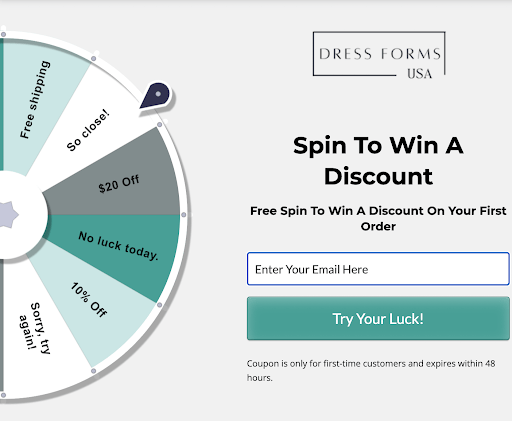
Solution #2: Drum up last-minute interest with FOMO
Fear of missing out (FOMO) is real.
60% of millennials say they tend to make a reactive purchase 24 hours after experiencing FOMO.
And this is definitely the situation you should play on.
Scarcity is excellent for generating FOMO as it indicates that a particular item is popular while making it even more valuable in the eyes of your customers.
Amazon, as in the example below, allows sellers to display the limited availability disclaimer, which is powerful for creating urgency and prompting customers to click the Add to cart button.
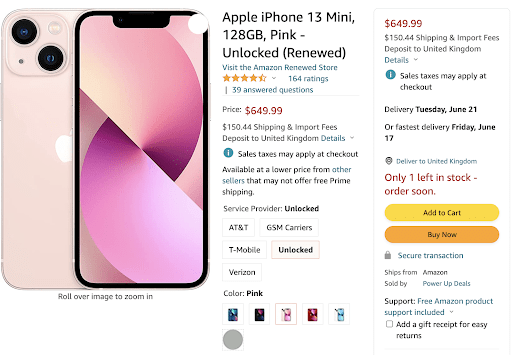
Final Thoughts
Ecommerce sales can be unpredictable, especially with a potential recession looming on the horizon. However, by remoiihnhhving these six conversion obstacles, you can gain a certain degree of control over your store’s performance. The best part about these conversion boosters is that they’re easy to implement, affordable, and effective.
Author Bio
Karl Kangur is a serial entrepreneur. He founded his first online business as a teenager. And loves to deliver amazing results to his clients. He is also a competitive bodybuilder, against the warnings of his doctor.
Don’t forget to share this article
Related articles
Nothing found.